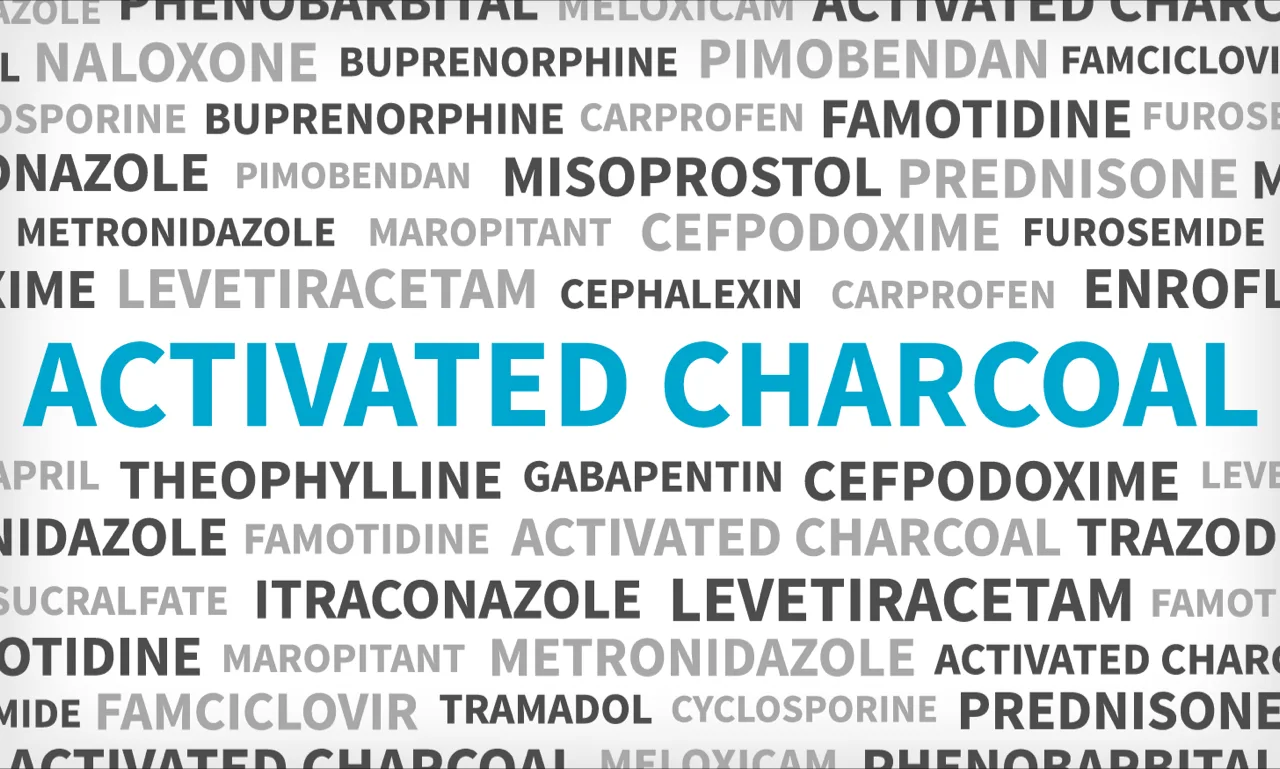Activated Charcoal

Oral Adsorbent (Systemic Drug)
Prescriber Highlights
Orally administered adsorbent for GI tract toxins and drug overdoses
Administration that is too rapid may induce emesis and aspiration
Monitor for hypernatremia in small dogs and cats
Activated charcoal can slow GI transit times, so it is often given with an osmotic cathartic to increase charcoal-toxin elimination
Handle with care—charcoal stains clothes easily
Uses, Indications
Administered orally to adsorb certain drugs or toxins to prevent or reduce their systemic absorption
Contraindications, Precautions, Warnings
Contraindications
Should not be used for mineral acids, salt toxicosis (eg, Play-Doh, paintballs), hydrocarbons, or caustic alkalis, as it is either ineffective or dangerous
Other possible contraindications include GI obstruction or ileus, hypernatremia, hyperosmolar states, or imminent GI surgery or endoscopy
Although not contraindicated, it is ineffective for use with ethanol, methanol, ethylene glycol, xylitol, heavy metals, and ion salts
Precautions
Patients with altered mentation or decreased gag reflex and patients otherwise at risk for aspiration pneumonia should not receive activated charcoal
Warnings
If the patient receives multiple doses of activated charcoal, giving a cathartic only once is recommended to prevent diarrhea, dehydration, and potentially hypernatremia
Side Effects
Rapid administration can induce emesis, potentially resulting in aspiration pneumonia
Both constipation and diarrhea have been reported; feces will be black
Hypernatremia has been reported in small dogs and cats
Drug Interactions
Other orally administered therapeutic agents should be separated from the activated charcoal dose by at least 3 hours
Polyethylene glycol electrolyte solutions, mineral oils, and dairy products may reduce the adsorptive capacity of activated charcoal
Monitoring
Dependent on the toxin or drug for which activated charcoal is being usedcould include clinical signs and the serum levels of the drug or toxin
Serum sodium levels, especially if the patient develops neurologic signs (eg, tremors, ataxia, seizures) associated with hypernatremia
Client Information
This agent should only be used with professional supervision to monitor for signs associated with hypernatremia
Charcoal can permanently stain fabrics
Dosage Forms
Both veterinary- and human-labeled products are available over the counter, including these formulations:
Activated charcoal 10.4%, kaolin 6.25% suspension in 240-mL bottles; Toxiban Suspension
Activated charcoal 10%, kaolin 6.25%, sorbitol 10% suspension in 240-mL bottles; Toxiban Suspension with Sorbitol
Compiled and summarized from Plumbs Veterinary Drugs by Shannon Palermo, VMD
Information about this drug was adapted from Plumbs Veterinary Drugs. Further details and more therapeutics can be found with a subscription at plumbsveterinarydrugs.com